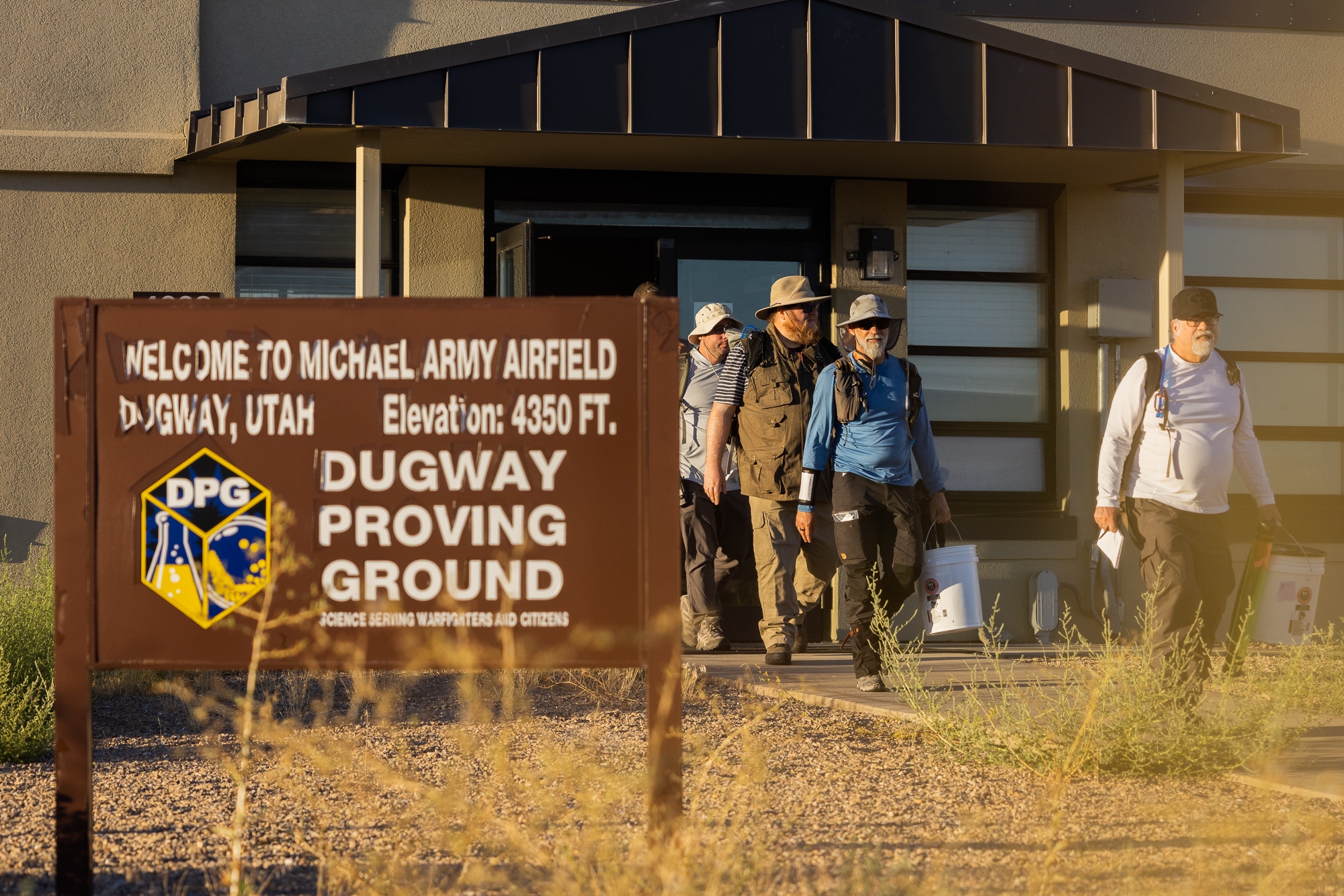
By University Communications - August 31, 2023
On the morning of Aug. 29, outside a hangar on the U.S. Army's Dugway Proving Ground in the high mountain desert of central Utah, members of NASA's OSIRIS-REx sample recovery team began a two-day "dress rehearsal" – their last opportunity to perfect procedures before the first extraterrestrial samples collected beyond the orbit of the moon are expected to land on Earth on Sept. 24.
Currently on its way to Earth, NASA's OSIRIS-REx spacecraft is carrying a capsule containing an estimated 8.8 ounces of rocky material collected from the surface of asteroid Bennu in 2020. Researchers will study the sample in the coming years to learn about how our planet and solar system formed and about the origin of organics that may have led to life on Earth.
Mission principal investigator Dante Lauretta, University of Arizona Regents Professor of Planetary Sciences and a member of the sample recovery team, was brimming with anticipation during the critical practice run.
"I wanted to personally be out there to greet these pieces of Bennu to our home planet," he said during a news conference hosted by NASA's Goddard Space Flight Center following the completion of the two-day rehearsal. "I want to welcome them to the curation facility at Johnson Space Center and get them ready for the adventure we're about to put them on."
Part of that adventure, Lauretta said, will take place at the University of Arizona, where scientists and experts have been busy building world-class laboratory instruments, including state-of-the-art electron microscopes, ion microprobes and a whole suite of ancillary equipment that can extract a wealth of information from even the smallest pieces of asteroid material.
One of the mission's biggest surprises came when the spacecraft's sampling arm extended into the asteroid surface during sample collection and encountered almost no resistance, said Lauretta, who likes to call Bennu the "trickster asteroid."
"It has challenged us every step of the way," he said. "We thought we were going to touch down on a solid surface, but it responded actually more like a fluid, like if you dropped yourself in a ball pit at a children's playground."
The good news, he said, is that because of that soft surface, the OSIRIS-REx spacecraft was able to collect an "enormous amount of material."
"We believe that we have at least four times as much material in that sample return capsule as we promised NASA when we designed the mission," Lauretta said. "More than 8 ounces, or about 250 grams, and boy, is the science team excited to get that."

